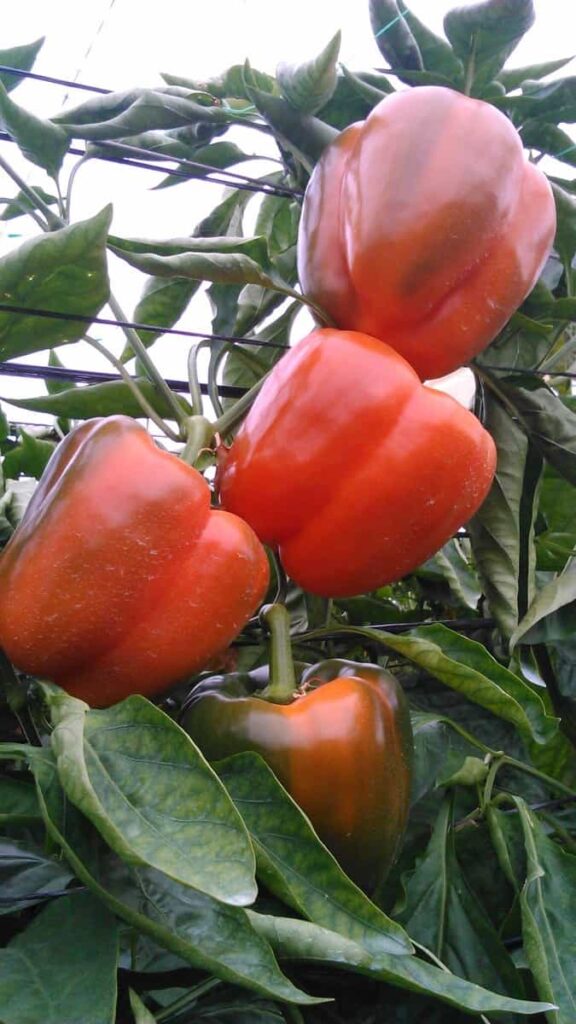Farming is now more profitable than ever because of changes in farming practices and techniques. The utilization of polyhouses is a recent agricultural discovery that allows farmers greater control over environmental conditions. Polyhouse farming is gaining popularity as a viable alternative to conventional open-air farming because of its lower risks and higher profits. In addition, this is a technique that allows farmers to keep growing food all year round.
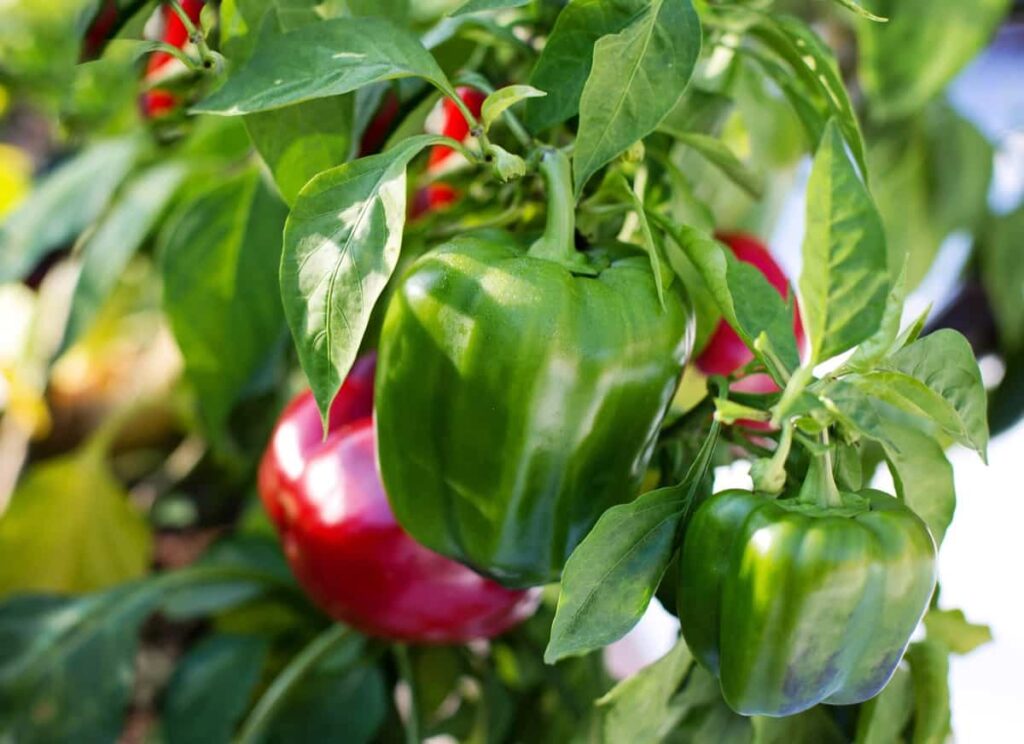
India currently has the world’s second-largest population, behind China; by 2027, it is projected to have surpassed China’s population. Growing crops year-round is essential to meet the challenge of feeding such a large population. To solve this issue, polyhouse farming has emerged as a viable option.
The subsidy for Polyhouse farming is just one of several measures implemented to encourage this method of crop production. This subsidy reduces the money farmers have to pay out of their pockets. Subsidies and financing for Polyhouses are also available from several rural banks. A polyhouse subsidy is a financial aid given to farmers to promote polyhouse farming and protect them from large losses.
How this farmer earning 35 lakhs from his capsicum farm
Is polyhouse farming profitable?
Cut flowers, fruits, and vegetables are all grown using this method by commercial farmers in India. You can grow a wide variety of plants in a polyhouse. There are several fruits, such as strawberries and papayas. You can grow a wide variety of vegetables using this technique, including tomatoes, spinach, onions, coriander, chilies, cauliflower, radishes, capsicum, bitter gourd, and cabbage.
In case you missed it: Organic Capsicum Farming – Bell Pepper Cultivation
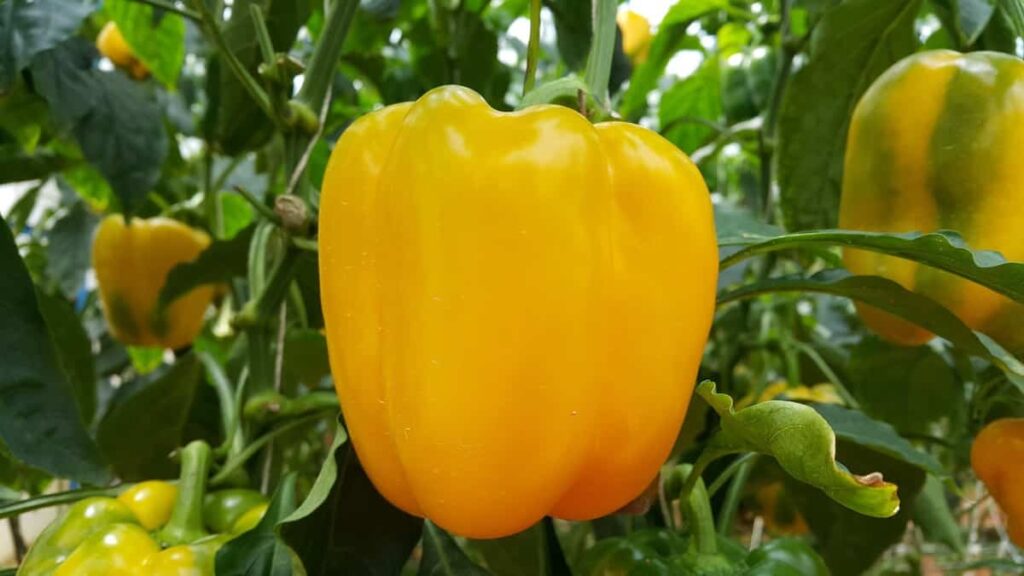
The most appealing aspect of polyhouse farming is that it allows you to cultivate a wide variety of beautiful flowers. When people come upon healthy vegetables, they don’t hesitate to purchase them. You never have to worry about meeting customer demand when you provide outstanding quality. In this way, Polyhouse farming can yield high-quality results. The polyhouse protects the crop at all times, and advanced technology tracks its progress in real-time.
Better control over water and fertilizer use increases the final product. Simply said, polyhouse farming ensures that even the highest quality standards can be met. Crops like tomatoes, capsicum, and cucumbers that don’t reach maturity can be grown vertically in a polyhouse. Studies reveal that tomatoes are responsible for 12% of the global vegetable harvest. Vertical farming in a polyhouse can help farmers maximize their limited growing space. Therefore, this technique can multiply the yield by three to four.
The ability to easily prune and train plants is another perk of the polyhouse method of vertical crop production. In the long run, you’ll gain more from the plant’s growth if you prune it regularly. Growers can grow plants even in areas where agricultural productivity is adverse by keeping the environment under control. The machinery installed inside a polyhouse can regulate several factors. Temperature, humidity, and air circulation are the three main ones.
Can capsicum be cultivated in a greenhouse/polyhouse?
Despite being a cool-season crop, capsicum can be cultivated year-round in polyhouses and other enclosed structures where the temperature and relative humidity (RH) can be controlled. Growing conditions for this crop are between 25 and 30 degrees Celsius during the day and 18 and 200 degrees Celsius at night, with a relative humidity of 50 to 60 percent. Fruits won’t be set properly if the temperature is over 35 degrees Celsius or below 20 degrees Celsius.
Capsicums of various colors are in high demand in city markets. Depending on the type and the time of year, conventionally produced green capsicum can produce anywhere from 20 to 40 tonnes per hectare. Green and colored capsicums can be grown in greenhouses/polyhouses for 7–10 months, with yields of 80–100 t per hectare.
In case you missed it: Capsicum Farming in Polyhouse (Bell Pepper) for Profit
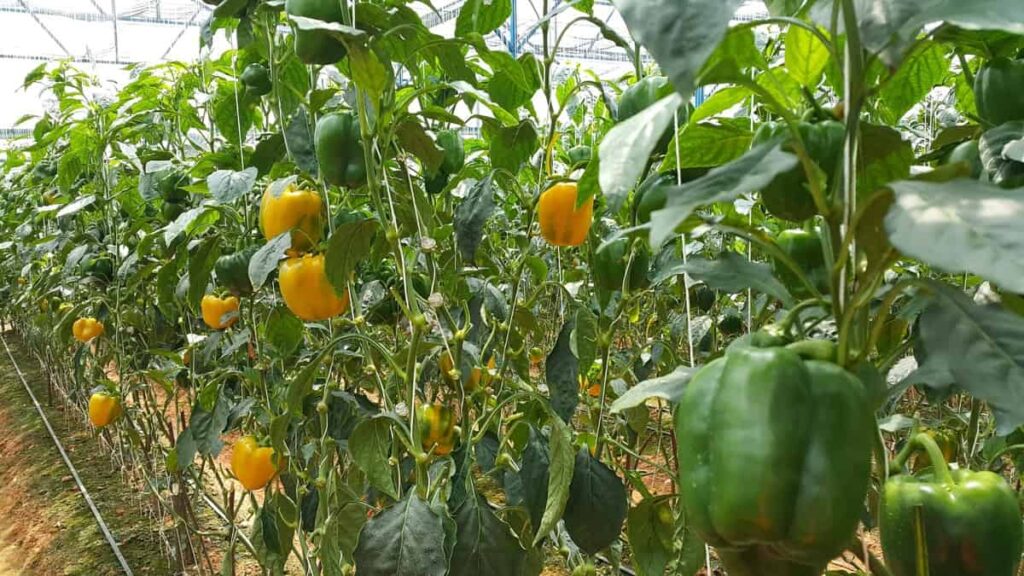
Compared to open-air farming, sheltered crops provide the following benefits: Greater output resulting from improved productivity. In other words, it’s ideal for plant growth. Reduces the impact of weather conditions, including rain, wind, and heat, as well as pests and diseases, to boost quality and productivity. Allows for increased yields of two to three times those of open culture and increased productivity throughout the year.
The success story of Mr. Bhikshapathi
Mr. Bhikshapathi, who once was a supervisor for a small company in a gulf country, was having financial issues and also did not like the distance from his family. At that point, his salary wasn’t sufficient for him and his family. He returned with the thought of doing something on his own in his village in Warangal district, Telangana. He took the risk of spending all his savings on a business.
Firstly he thought of farming but wasn’t interested as he was afraid of harsh climatic conditions that could disturb the crop. And all the other industries were new to him, so he was afraid of that too. After a few days, Mr. Bhikshapathi and his friend attended a village workshop conducted by government officials. He just went with his friend to accompany him. As he listened to the seminar, the officials mentioned polyhouses cultivation and its uses, which caught his attention.
They also said that even though it was a costly venture, the government would provide support through a subsidy. Moved by this, he met the officials after the meeting and acquired all the information required. After a thorough investigation, he thought it was worth the risk and started his polyhouse farm. Now he is a successful polyhouse farmer and an example in his village. Now let us get into the details of his polyhouse farm, which made him what he is today.
In case you missed it: How to Grow Okra in USA: Soil, Propagation, Planting, Care, and Farming Tips
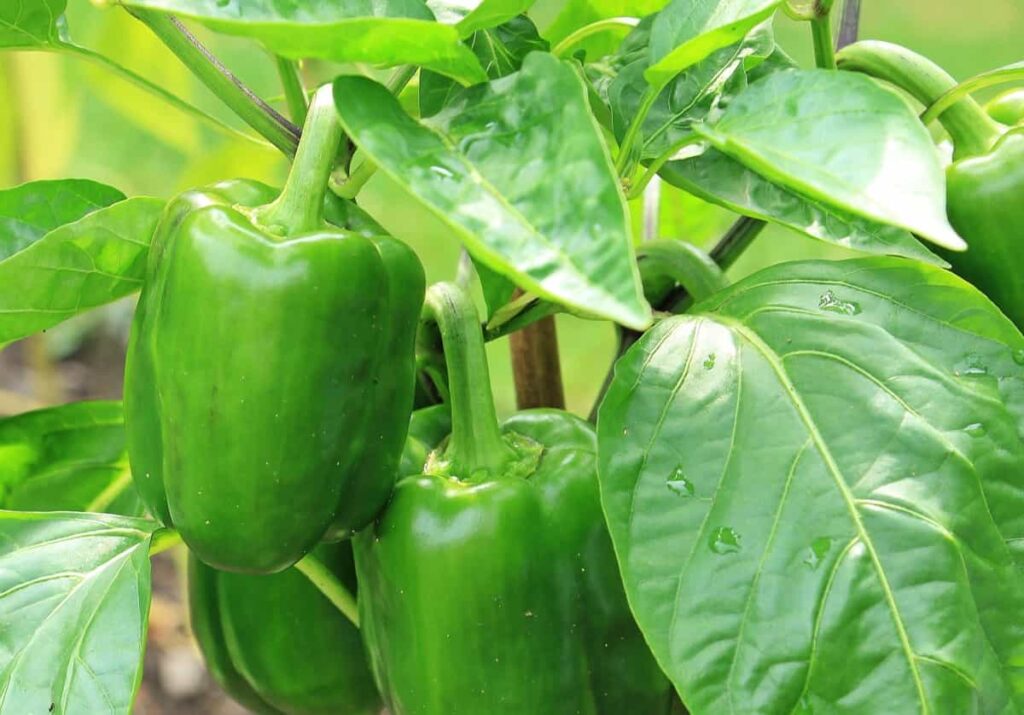
Plant selection, in Mr. Bhikshaopathi’s words
When he was thinking about what plants to grow in polyhouses, tomatoes and cucumbers came to mind. But he wanted to cultivate something that’s often not grown in his region, so he chose capsicum. Also, capsicum is in high demand in his village and Telangana state. He bought transplants from Pune at 4 rupees per transplant. He also said that there are 38,670 plants in his 4-acre polyhouse farm. He chose to sell his harvest directly in the market, just 7 km from his farm.
Polyhouse construction details, according to Mr. Bhikhapathi
Mr. Bhikshapathi owns four-acre land and has begun constructing a polyhouse on it. He says it took him 35 lakhs to build the polyhouse after being granted a subsidy. And it took nearly three months to do it. He says we have to overlook the polyhouse construction to reduce errors. He also says this was the only heavy investment, but he risked it as it was only a one-time investment, and he knew he’d see better results in future years for his polyhouse. And they did.
Land preparation details for polyhouse, according to Mr. Bhikhapathi
He says it took him nearly 100 tractors per acre of red soil for beds in polyhouse. He added that it is to be plowed to a fine tilth in the polyhouse. Soil is amended with 20-25 kg of well-rotted organic manure per square meter. Three consecutive harvests of capsicums can be grown from a single application. Once the soil has been worked to a fine tilth, it can be used to construct raised beds. A bed of 90 to 100 cm wide by 15 to 22 cm high is ideal, says Mr. Bhiksapathi.
It’s recommended to provide 45 to 50 centimeters between beds for ease of movement. Next comes fumigation. He said that formaldehyde is used to wet the crop beds, which are then covered wh black polyethylene mulch. After four days, the polyethylene covering is taken off the beds, and the formalin vapors are swept away by hand. This can cost you labor charges, he added. However, only then can the plants be transplanted.
In case you missed it: Top 18 Steps to Boost Chilli/Pepper Yield: How to Increase Production, Quality, and Tips
After three harvests, formalin treatment can be repeated if necessary. Formaldehyde fumigation reduces the prevalence of soil-borne diseases. Before transplanting, the beds should be uniformly fertilized with 80 kg of calcium ammonium nitrate, 125 kg of superphosphate, and 32 kilograms of murate of potash or 40 kg of sulfate of potash to achieve a 20:25:20 NPK ratio, says Mr. Bhikshapathi.
Details of Mr. Bhiksapathi’s capsicum polyhouse farm
As water is scarce in his region, he installed a small pond with polyethylene as a base to conserve rainwater. He connected different pipes from the top of the polyhouse to this pond. So whenever it rains, all the rainwater gathers in this pond. He also uses the groundwater motor as a water source only when necessary. Watering in his polyhouse is done by a drip watering system. Drip irrigation is one of the essential aspects, says Mr. Bhikshapathi.
Depending on the season, a drip irrigation system can deliver as much as two to four liters of water per square meter daily. Also, watering should be done no more than 20 minutes a day, that too once in two days. The same goes for fertigation. Fertilizers are also given to plants through the drip irrigation system. This involves natural liquid fertilizers. This process of providing fertilizers through drip is known as the fertigation method.
After two months of transplanting, foliar applications of water-soluble fertilizers such as potassium nitrate and calcium nitrate are given to capsicum crops every three weeks through the fertigation method. Foggers are very important in a polyhouse as they regulate its humidity in the polyhouse. Mr. Bhiksapathi says that foggers should be used three times a day, mainly in summer.
And that too, each fogger should be used only for two seconds, enough time for the water particles to evaporate into the air before falling to the ground. By mistake, if you switch on them for more time, beds can get wet, resulting in the crop’s negative yield. Pruning is also a must for capsicum crops, says Mr. Bhikshapathi. To maintain a healthy four-stemmed plant, capsicums should be pruned.
At the sixth or seventh node, the plant’s growing tip divides in two. These two branches meet and are then separated into another pair. Each branching point gives rise to two offshoots, one strong and one weak. Fruits are larger, of higher quality, and more productive when pruned every 8 to 10 days beginning 30 days after transplanting. Capsicum plants can have their number of stems reduced to two without affecting output.
In case you missed it: How to Start Bell Pepper Farming in the USA: Production, and A Step-by-Step Growing Guide for Beginners
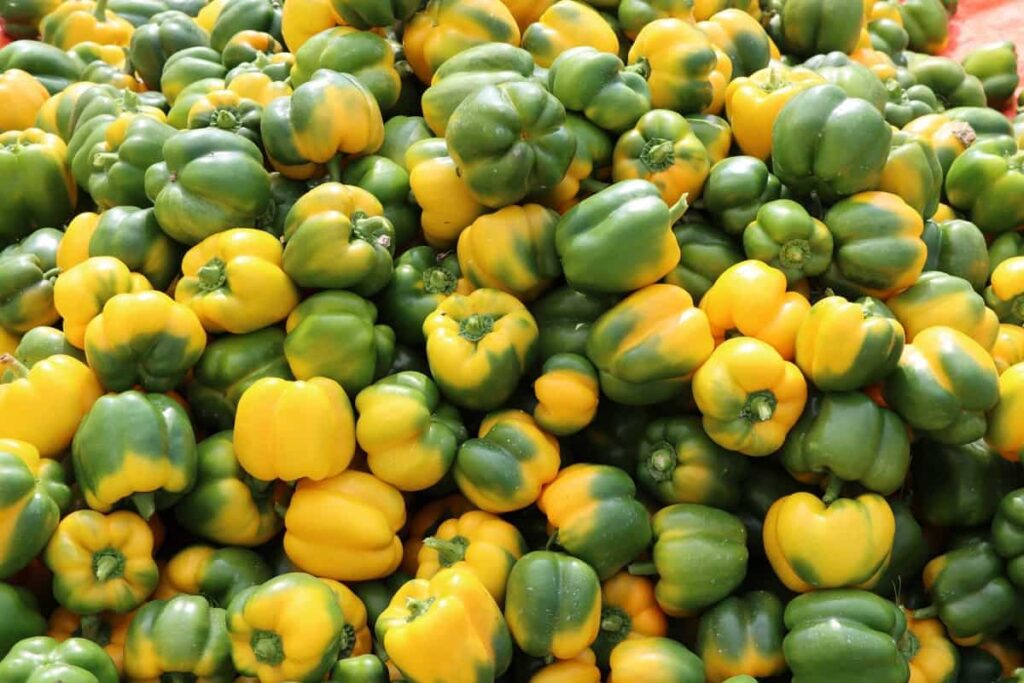
Financial analysis of Mr. Bhiksapathi’s polyhouse capsicum farm
The first harvest starts three months after planting the seedling, and after the crop yields again for six months. This involves continuous harvests. You can either harvest a particular number of plants daily, or you can harvest all of the plants at once, once the fruit matures. Mr. Bhiksapathi harvests 12 quintals of crop daily in 8 months and sells it in the farmer’s market.
He sells his capsicum at 20 rupees per kg which is very low, putting his capsicums in high demand in his village. Many people even come from the other villages to buy from him and sell in their villages. Now we look into Mr. Bhiksapathi’s income; he gets nearly 30,000 rupees from the farmer’s market daily, considering his whole sales to other villages. From this, he gets a profit of nearly 17,000 rupees per day. All the extra amount can be erased as an investment in a polyhouse.
So per day, if Mr. Bhiksapathi’s profit is 17,000 rupees, assuming he does this for seven months in a year (harvest period), his yearly profit would be nearly 35,70,000 rupees. We have directly calculated profit here by erasing the investment from the daily income. One has to note that all the figures mentioned are taken on an average constraint basis; if you could take care of your capsicum polyhouse farm to every minute detail, you can even get more profit than described above.
Mr. Bhikshapathi is now happy with whatever he is earning and pays off all his debts in three years while making huge profits with his capsicum polyhouse farm. He now wants to expand his business to the nearby town markets. He advises young and capable farmers to get into these modern agricultural practices as he has seen the results. He now firmly believes in modern agriculture techniques, as he is sure they will result in enormous profits for his fellow farmers.
- Economical Aquaculture: A Guide to Low-Budget Fish Farming
- 15 Common Planting Errors That Can Doom Your Fruit Trees
- How to Make Houseplants Bushy: Effective Tips and Ideas
- Innovative Strategies for Boosting Coconut Pollination and Yield
- Pollination Strategies for Maximum Pumpkin Yield
- The Complete Guide to Chicken Fattening: Strategies for Maximum Growth
- Natural Solutions for Tulip Problems: 100% Effective Remedies for Leaf and Bulb-Related Issues
- Revolutionizing Citrus Preservation: Towards a Healthier, Greener Future
- Natural Solutions for Peony Leaf and Flower Problems: 100% Effective Remedies
- Maximizing Profits with Avocado Contract Farming in India: A Comprehensive Guide
- Natural Solutions for Hydrangea Problems: 100% Effective Remedies for Leaf and Flowers
- The Ultimate Guide to Choosing the Perfect Foliage Friend: Bringing Life Indoors
- From Sunlight to Sustainability: 15 Ways to Use Solar Technology in Agriculture
- The Ultimate Guide to Dong Tao Chicken: Exploring from History to Raising
- The Eco-Friendly Makeover: How to Convert Your Unused Swimming Pool into a Fish Pond
- Mastering the Art of Delaware Chicken Farming: Essentials for Healthy Backyard Flocks
- 20 Best Homemade Fertilizers for Money Plant: DIY Recipes and Application Methods
- How to Craft a Comprehensive Free-Range Chicken Farming Business Plan
- Brighten Your Flock: Raising Easter Egger Chickens for Beauty and Bounty
- How to Optimize Your Poultry Egg Farm Business Plan with These Strategies
- Subsidy for Spirulina Cultivation: How Indian Government Schemes Encouraging Spirulina Farmers
- Ultimate Guide to Raising Dominique Chickens: Breeding, Feeding, Egg-Production, and Care
- Mastering the Art of Raising Jersey Giant Chickens: Care, Feeding, and More
- Ultimate Guide to Raising Legbar Chickens: Breeding, Farming Practices, Diet, Egg-Production
- How to Raise Welsummer Chickens: A Comprehensive Guide for Beginners
- How to Protect Indoor Plants in Winter: A Comprehensive Guide
- Ultimate Guide to Grow Bag Gardening: Tips, Tricks, and Planting Ideas for Urban Gardeners
- Guide to Lotus Cultivation: How to Propagate, Plant, Grow, Care, Cost, and Profit
- Agriculture Drone Subsidy Scheme: Government Kisan Subsidy, License, and How to Apply Online
- Ultimate Guide to Raising Araucana Chickens: Breed Profile, Farming Economics, Diet, and Care
- Bringing Hydroponics to Classroom: Importance, Benefits of Learning for School Students
- Ultimate Guide to Raising Polish Chickens: Breed Profile, Farming Economics, Diet, and Care
- Ultimate Guide to Raising Australorp Chickens: Profile, Farming Economics, Egg Production, Diet, and Care
- Silkie Chicken Farming: Raising Practices, Varieties, Egg Production, Diet, and Care
- Sussex Chicken Farming: Raising Practices, Varieties, Egg Production, Diet and Care
- Homemade Feed Formulations for Livestock: Discover Cost-effective Starter to Finisher Feed Recipes
